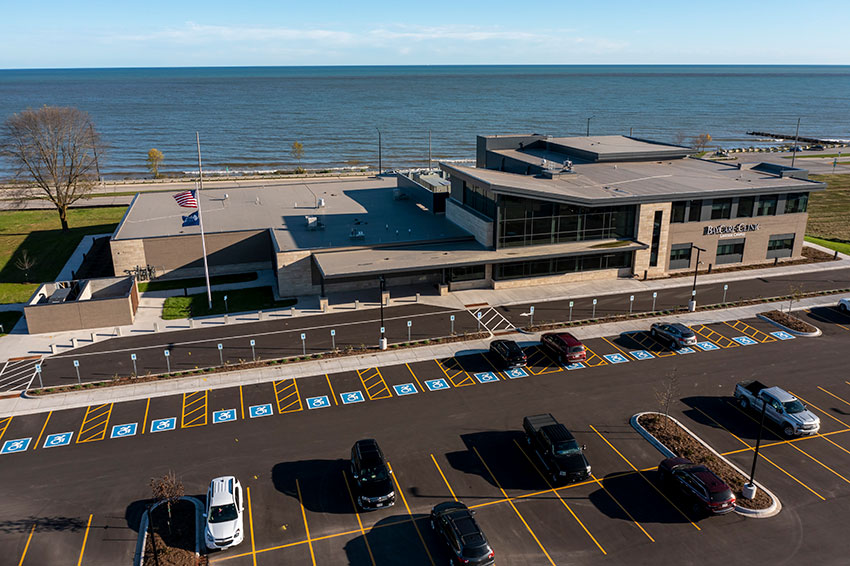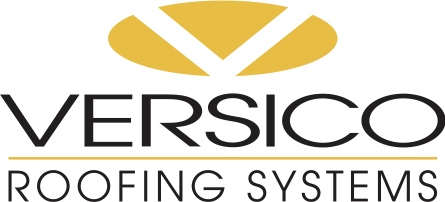Focus on Health in Roof Specification
 1 AIA LU/HSW; 1 GBCI CE Hour; 0.1 ICC CEU; 1 IIBEC CEH; 0.1 IACET CEU*; 1 AIBD P-CE; AAA 1 Structured Learning Hour; This course can be self-reported to the AANB, as per their CE Guidelines; AAPEI 1 Structured Learning Hour; This course can be self-reported to the AIBC, as per their CE Guidelines.; MAA 1 Structured Learning Hour; This course can be self-reported to the NLAA.; This course can be self-reported to the NSAA; NWTAA 1 Structured Learning Hour; OAA 1 Learning Hour; SAA 1 Hour of Core Learning
1 AIA LU/HSW; 1 GBCI CE Hour; 0.1 ICC CEU; 1 IIBEC CEH; 0.1 IACET CEU*; 1 AIBD P-CE; AAA 1 Structured Learning Hour; This course can be self-reported to the AANB, as per their CE Guidelines; AAPEI 1 Structured Learning Hour; This course can be self-reported to the AIBC, as per their CE Guidelines.; MAA 1 Structured Learning Hour; This course can be self-reported to the NLAA.; This course can be self-reported to the NSAA; NWTAA 1 Structured Learning Hour; OAA 1 Learning Hour; SAA 1 Hour of Core Learning
Learning Objectives:
- Explain how indoor and outdoor VOCs can negatively impact occupants, installers, and the environment.
- List state and federal regulations that impact the allowed VOC content in roofing applications.
- Discuss innovative options in single-ply roofing materials and installation techniques that offer low and no-VOCs.
- Identify building owner benefits to installing a low- or no-VOC roofing system, including a healthier renovation project and potential green building credits.
This course is part of the Commercial Roofing Academy
Chemical compounds are always in a state of evaporating (vaporizing) and condensing, even below the boiling point.
This is true for both solids and liquids. Solids that are comprised of additives that were liquid chemicals when manufactured off-gas those chemicals. To understand how quickly and with what velocity these materials evaporate, we measure the vapor pressure.
Vapor pressure is a measure of the speed at which a substance vaporizes. Vapor pressure can be measured and quantified in millimeters of mercury (mmHb) as the pressure exerted by the vapor molecules above the surface of a liquid when the liquid and vapor are in equilibrium, meaning when they are evaporating and condensing at the same rate, within a closed container. This is the scientific definition, but in simple terms, vapor pressure measures how fast, or the force at which molecules will escape a chemical compound. The higher the vapor pressure, the faster the vapor will disperse into the surrounding area.
Using water as an example, we know when water boils it turns from liquid to vapor, but along the path to hitting the boiling point, the vapor pressure of water changes. The hotter the water, the faster the molecules escape. Imagine a tea kettle slowly beginning to whistle even before the water is at a full boil. At 32°F (0°C) the vapor pressure of water is 4.58 mmHg. At 77°F (25°C)2 vapor pressure is 23.76 mmHg. At the boiling point, 212°F (100°C) water’s vapor pressure is 760 mmHg.

Photo courtesy of Versico Roofing Systems
Concerns of localized ground ozone and smog are the primary concerns for limiting VOCs in roofing materials. This is especially true in when the project is a school or medical facility, as featured in this image.
Why is this important? It all comes down to the “V” in VOCs. Volatile organic compounds, by definition, generally have low boiling points and high vapor pressure values. This means they are chemically prone to vaporize and disperse their molecules with high pressure in “normal” conditions, including the built environment. According to the Hazardous Substances Data Bank (HSDB), formaldehyde at 100 percent purity has a vapor pressure of 3,890 mmHg at 77°F (25°C)2. Again, compare that to the 23.27 mmHg of water at the same temperature and we can see why these VOCs are far more invasive.
Fortunately, most building products, paints, and finishes that incorporate formaldehyde in the manufacturing process use a diluted mix of the chemical, however, that simply reduces the overall volume of the VOC, not the ability to rapidly vaporize nor the vapor pressure.
Because boiling points and vapor pressure levels vary from compound to compound, VOCs are further defined by how readily they will emit vapors. The higher the volatility (lower boiling point), the more likely the compound will be emitted from a product or surface into the air.
This predisposition of a chemical to rapidly vaporize is what makes them volatile, and in fact often the low boiling point can be the demarcation line for identifying VOCs.
The World Health Organization (WHO) categorizes indoor organic pollutants as:
- Very volatile organic compounds (VVOCs)
- Volatile organic compounds (VOCs)
- Semi-volatile organic compounds (SVOCs)
From a health and safety standpoint, VVOCs are the most dangerous as they are toxic at very low levels of concentration. VVOCs are so volatile that they are difficult to measure and are found almost entirely as gasses in the air rather than in materials or on surfaces. However, of all three classifications, VOCs are far more common and can be as harmful as VVOCs. Most VOCs will be in solids or liquids that contain them, or on surfaces including dust, furnishings, and building materials. SVOCS, the least volatile compounds found in air, constitute a far smaller fraction of the total present indoors.3
Moving on to the “OC” in the VOC, an organic compound is any of a large class of chemical compounds whose molecules contain carbon. There are some carbonate compounds which contain carbon but are considered inorganic, but for the purposes of this article, the definition above will suffice.
VOCS INSIDE
The introduction of VOCs into the built environment is normally due to products that consumers bring into their buildings in the form of cleaners, pesticides, and solvents. However, during construction, builders can introduce many VOCs into a building with the products and materials specified for the project. This exposure can at once create risks for tradespeople and workers on the jobsite, and depending on how persistent the VOCs, eventually expose occupants.
Almost everything in the built environment including paints, caulks, sealants, adhesives, carpeting, flooring, insulation, cleaning products, and fuel contain VOCs unless they are specifically designed and manufactured without them. Here is a list of some of the most common VOCs found on the construction site.
Know Your VOCs
Formaldehyde (CH2O) found in glues, cast plastics, varnishes, insulating materials, pressed wood products such as plywood, particle board, laminate flooring, and varnishes.
Vinyl chloride (C2H3Cl) is used in the making of plastics (PVC), floor coverings, and consumer goods. It is also known as chloroethene, chloroethylene, or ethylene monochloride.
Toluene (C7H8) is an aromatic hydrocarbon and a colorless liquid that is water-insoluble with a smell associated with paint thinners, and it is predominantly used in some types of paint thinner, permanent markers, and certain types of glue. Toluene has the potential to cause severe neurological harm.
Isopropyl alcohol is a colorless liquid, flammable chemical compound, with the chemical formula CH3CHOHCH3 and having a strong odor. It is used in the making of cosmetics, pharmaceuticals, perfumes, dye solutions, antifreeze, soaps, cleaners, and disinfecting agents.
Carbon disulfide or carbon bisulfide (CS2) is a highly volatile compound and is present as a compound in varnishes, solvents, and insecticides.4
Building materials that contain VOCs can continue to off-gas after the installation is complete. The VOCs in paint, for instance, can continue to disperse for up to 72 hours, long after the coating is dry and our nose no longer detects an odor. Floors and pressboards can keep emitting low levels of VOC for years. The danger of VOCs to occupants comes from a combination of total volume of VOCs, type of VOCs, and exposure. This is why choosing low or no-VOC products for the interior is critical, especially for products such as carpet and flooring.
VOCs inside the house are one issue, while VOCs on the outside that are introduced during construction or remodeling present an almost completely different environmental challenge for the builder. As we will see, this is especially true when it comes to specifying roofing materials.











